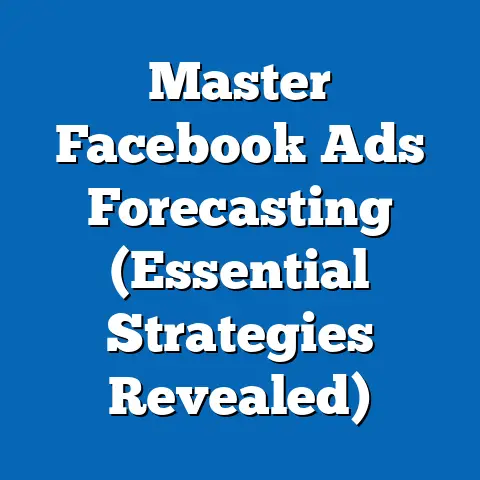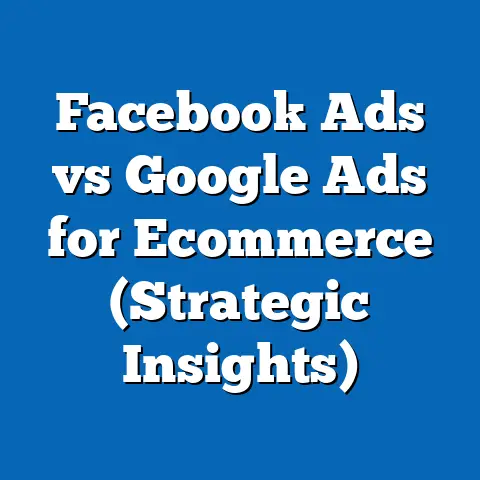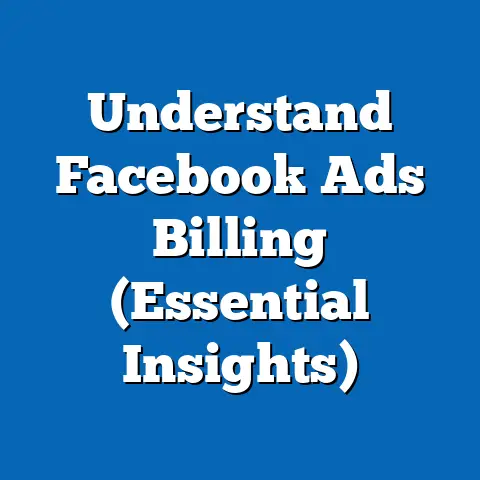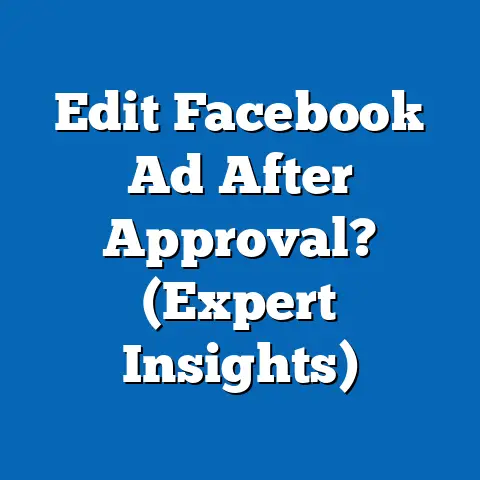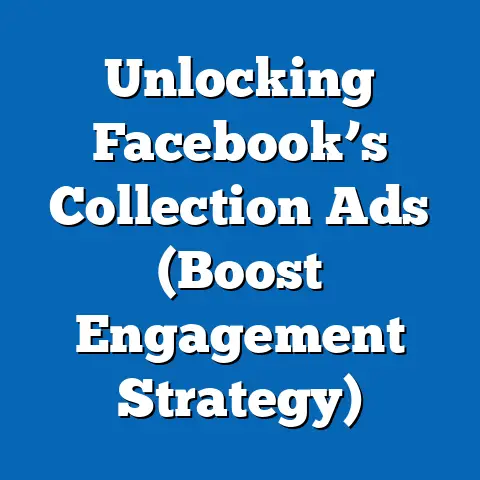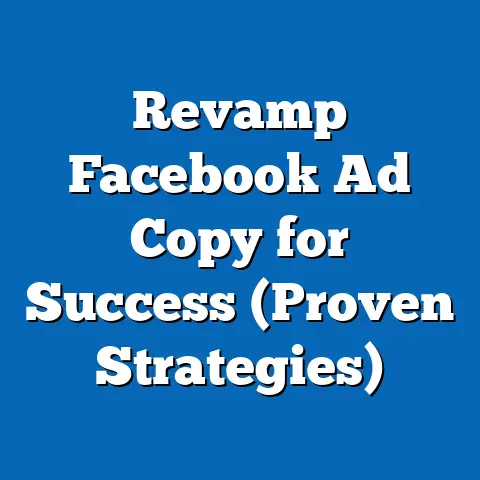Optimize FB Ad: Change Destination Links (Pro Tips)
Have you ever felt that pang of disappointment when your Facebook ad campaign, the one you poured hours into crafting, falls flat? The clicks are there, sure, but the conversions? Non-existent. It’s like shouting into a void, your message echoing without anyone truly listening. I’ve been there. I’ve felt the frustration of watching ad budgets dwindle while the ROI remains stubbornly low. The stress of trying to figure out what’s wrong, what’s missing, can be overwhelming. You tweak the targeting, rewrite the copy, swap out the images, but still…nothing.
It’s enough to make you question everything you thought you knew about Facebook advertising. You start to think maybe Facebook Ads just aren’t right for your business. The truth is, the secret sauce isn’t always in the obvious ingredients. Sometimes, it’s in the subtle, often overlooked details – like the destination link you’re using.
Imagine the relief of finally cracking the code, of discovering a simple yet powerful strategy that transforms your ad campaigns from money pits into conversion machines. The satisfaction of seeing your engagement skyrocket, your leads multiply, and your customer base expand. What if I told you that changing your destination link could be the key to unlocking this potential?
It’s true. The right link can bridge the gap between your ad and your audience, turning casual browsers into engaged customers. It’s about creating a seamless, relevant, and compelling experience that guides users toward your desired action. In this article, I’m going to show you how to harness the power of destination links to supercharge your Facebook ads. We’ll explore why they matter, when to change them, and, most importantly, provide you with pro tips and real-world examples to maximize engagement and drive results. This is about more than just advertising; it’s about connecting with your audience on a deeper level and building lasting relationships.
Ready to transform your Facebook ads from frustrating failures to phenomenal successes? Let’s dive in!
Understanding Destination Links
So, what exactly are destination links, and why do they hold so much power within the Facebook advertising ecosystem? Simply put, a destination link is the URL that users are directed to when they click on your Facebook ad. It’s the bridge between your captivating ad copy and your ultimate goal: a purchase, a sign-up, a download, or whatever action you want your audience to take.
But it’s more than just a technical connection. Destination links are the first impression your business makes after someone decides your ad is worth their attention. It’s the moment of truth, the point where potential customers decide whether to invest their time and energy into what you offer.
Think of it like this: you’re walking down a bustling street and see a sign for a fantastic new restaurant. The sign is beautifully designed, the food looks amazing, and the copy promises an unforgettable dining experience. Intrigued, you decide to check it out. But when you arrive at the address, you find yourself in front of a boarded-up building. Disappointment doesn’t even begin to cover it.
That’s precisely what happens when your Facebook ad leads to a generic or irrelevant destination. You’ve generated interest, only to squander it with a poor user experience. The destination link is your opportunity to deliver on the promise of your ad and guide users seamlessly towards conversion.
The Psychology Behind Destination Links
Understanding the psychology behind why destination links matter can significantly impact your ad strategy. People are driven by expectations. When they click on an ad, they expect to be taken to a page that directly relates to the ad’s content. A mismatch can lead to frustration, distrust, and a quick exit.
Consider these psychological factors:
- Relevance: Users crave relevant information. A destination link that delivers exactly what the ad promises satisfies this need and builds trust.
- Cognitive Ease: People prefer experiences that are easy to understand and navigate. A clear, intuitive landing page makes it easier for users to take the desired action.
- Perceived Value: The destination link contributes to the overall perceived value of your offer. A well-designed landing page with compelling content enhances the perceived value and increases the likelihood of conversion.
It’s about creating a cohesive and trustworthy experience. Every element, from the ad copy to the destination link, should work together to build confidence and encourage action.
The Data Speaks: Destination Links Impact Performance
Don’t just take my word for it. The data clearly demonstrates the significant impact of destination links on ad performance. Studies have shown that optimizing destination links can lead to substantial improvements in key metrics:
- Click-Through Rate (CTR): A relevant and engaging destination link can significantly boost your CTR. According to research by HubSpot, personalized calls-to-action (which directly relate to the destination) perform 202% better than generic ones.
- Conversion Rate: A well-optimized landing page can dramatically increase your conversion rate. A study by Unbounce found that landing pages with personalized content can increase conversion rates by up to 10%.
- Bounce Rate: A high bounce rate indicates that users are leaving your page quickly, often because they’re not finding what they expected. Optimizing your destination link to match ad content can significantly reduce your bounce rate.
Takeaway: Destination links are more than just URLs. They’re critical touchpoints that influence user behavior and drive ad performance. By understanding their role and optimizing them effectively, you can unlock the full potential of your Facebook ad campaigns.
Next Step: Start analyzing your current Facebook ad campaigns to identify areas where your destination links could be improved. Are they relevant? Are they engaging? Are they guiding users towards conversion?
When to Change Destination Links
Now that we understand the importance of destination links, let’s explore specific scenarios where changing them can be particularly beneficial. The truth is, your advertising strategy shouldn’t be static. Just as your business evolves, so too should your ad campaigns. And one of the easiest and most effective ways to keep your ads fresh and relevant is by strategically changing your destination links.
Seasonal Promotions and Special Events
One of the most obvious times to change your destination links is during seasonal promotions and special events. Think holidays, back-to-school sales, Black Friday, Cyber Monday, or even niche events relevant to your industry.
For example, if you’re running a campaign promoting summer swimwear, your destination link should lead directly to your swimwear collection page, not your generic homepage. Similarly, during the holiday season, your destination link should showcase your holiday gift guide or special offers.
By aligning your destination link with the specific promotion, you create a seamless and relevant experience for users, increasing the likelihood of conversion.
Product Launches and New Offerings
Launching a new product or service? Don’t rely on your existing destination links. Create a dedicated landing page that highlights the key features, benefits, and pricing of your new offering.
This allows you to:
- Focus User Attention: Direct users to a page specifically designed to showcase your new product, minimizing distractions and maximizing engagement.
- Control the Narrative: Craft a compelling narrative that highlights the unique value proposition of your new offering.
- Capture Leads: Include a lead capture form on the landing page to collect contact information from interested users.
Targeting Different Audience Segments
One-size-fits-all advertising rarely works. If you’re targeting different audience segments with your Facebook ads, you need to tailor your destination links accordingly.
For example, if you’re targeting both new customers and existing customers, you might direct new customers to a landing page that introduces your brand and offers a special discount, while directing existing customers to a page that showcases your latest products or loyalty program.
By personalizing the destination link based on audience segmentation, you can create a more relevant and engaging experience, increasing the likelihood of conversion.
The Power of A/B Testing
A/B testing, also known as split testing, is a powerful technique for optimizing your destination links. It involves creating two or more versions of a landing page or destination link and testing them against each other to see which one performs better.
Here’s how it works:
- Identify a Problem: Analyze your ad performance data to identify areas for improvement. For example, you might notice that your bounce rate is high or your conversion rate is low.
- Create a Hypothesis: Develop a hypothesis about why the problem exists and how you can solve it by changing your destination link. For example, you might hypothesize that directing users to a more specific landing page will improve conversion rates.
- Create Variations: Create two or more variations of your destination link, each designed to test your hypothesis.
- Run the Test: Use Facebook’s A/B testing feature to split your traffic between the different variations.
- Analyze the Results: After a sufficient period of time, analyze the results to see which variation performed better.
- Implement the Winner: Implement the winning variation and continue to monitor its performance.
Example:
Let’s say you’re running a campaign promoting a free e-book. You could A/B test two different landing pages:
- Version A: A simple landing page with a headline, a brief description of the e-book, and a form to download it.
- Version B: A longer landing page with a more detailed description of the e-book, testimonials, and a video.
By A/B testing these two variations, you can determine which landing page generates the most downloads and optimize your destination link accordingly.
Analyzing Ad Performance Data
Ultimately, the decision of when to change your destination links should be driven by data. Regularly analyze your Facebook ad performance data to identify opportunities for improvement.
Pay attention to metrics such as:
- Click-Through Rate (CTR): A low CTR might indicate that your ad copy or visuals are not resonating with your target audience.
- Conversion Rate: A low conversion rate might indicate that your destination link is not effectively guiding users towards the desired action.
- Bounce Rate: A high bounce rate might indicate that users are not finding what they expected on your landing page.
- Cost Per Acquisition (CPA): A high CPA might indicate that your ad campaign is not cost-effective.
By closely monitoring these metrics, you can identify areas where changing your destination links can have the biggest impact.
Takeaway: Don’t be afraid to experiment with your destination links. By strategically changing them based on seasonal promotions, product launches, audience segmentation, and data analysis, you can significantly improve the performance of your Facebook ad campaigns.
Next Step: Schedule a regular review of your Facebook ad performance data to identify opportunities for optimizing your destination links. Implement A/B testing to continuously improve your results.
You know why destination links are crucial and when to change them. Now, let’s explore some actionable pro tips to help you make the most of this powerful strategy. These aren’t just surface-level suggestions; they’re battle-tested techniques I’ve learned from years of experience in the Facebook advertising trenches.Tip 1: Match the Link to Your Ad Content
This might seem obvious, but it’s surprising how often advertisers get this wrong. The key is to ensure that your destination link seamlessly aligns with your ad copy and visuals. The experience should be consistent and intuitive.
Imagine seeing an ad for “50% Off All Sneakers” and clicking through to a generic homepage with no mention of the sale. Frustrating, right? You’d likely bounce immediately.
Instead, the destination link should lead directly to a page showcasing the discounted sneakers. This creates a seamless experience, reduces friction, and increases the likelihood of a purchase.
Examples of Mismatched Ads and Their Consequences:
- Ad: “Learn to Play Guitar in 30 Days!”
- Poor Destination: Generic music lessons page.
- Consequence: High bounce rate, low conversion rate, frustrated users.
- Better Destination: Dedicated landing page showcasing the 30-day guitar course with testimonials and a clear call to action.
- Ad: “Free Consultation for Business Owners”
- Poor Destination: Generic “Contact Us” page.
- Consequence: Low lead generation, wasted ad spend.
- Better Destination: A landing page with a specific form for requesting a free consultation, highlighting the benefits and addressing potential concerns.
- Poor Destination: Generic music lessons page.
- Consequence: High bounce rate, low conversion rate, frustrated users.
- Better Destination: Dedicated landing page showcasing the 30-day guitar course with testimonials and a clear call to action.
- Poor Destination: Generic “Contact Us” page.
- Consequence: Low lead generation, wasted ad spend.
- Better Destination: A landing page with a specific form for requesting a free consultation, highlighting the benefits and addressing potential concerns.
Key Considerations:
- Relevance: Does the destination link directly relate to the ad’s promise?
- Clarity: Is it immediately clear what users should do on the landing page?
- Consistency: Does the messaging and branding align with the ad?
Tip 2: Create Urgency with Your Links
Urgency is a powerful psychological trigger that can motivate users to take action. By incorporating elements of urgency into your destination links, you can significantly boost your conversion rates.
Think limited-time offers, exclusive deals, or countdown timers. These tactics create a sense of scarcity and encourage users to act now before they miss out.
Examples of Ads That Utilize Urgency Effectively:
- “Flash Sale! 75% Off for the Next 24 Hours Only!”
- Destination Link: A landing page showcasing the discounted products with a prominent countdown timer.
- “Exclusive Offer: Get a Free Gift with Your First Purchase (Limited Time Only)”
- Destination Link: A landing page highlighting the free gift and emphasizing the limited-time nature of the offer.
- Destination Link: A landing page showcasing the discounted products with a prominent countdown timer.
- Destination Link: A landing page highlighting the free gift and emphasizing the limited-time nature of the offer.
Techniques for Creating Urgency:
- Countdown Timers: Display a countdown timer on your landing page to visually emphasize the limited-time nature of the offer.
- Limited Stock: Highlight the limited availability of products or services.
- Exclusive Deals: Offer exclusive discounts or bonuses that are only available for a limited time.
- Scarcity Language: Use words like “limited,” “exclusive,” “last chance,” and “don’t miss out” in your ad copy and landing page.
Tip 3: Utilize Custom Landing Pages
Ditch the generic homepage and embrace the power of custom landing pages. A custom landing page is a standalone web page designed specifically for a particular ad campaign. It’s focused, targeted, and optimized for conversion.
The benefits of using custom landing pages are numerous:
- Improved User Experience: Tailored content provides a more relevant and engaging experience for users.
- Increased Conversion Rates: Focused messaging and clear calls to action drive higher conversion rates.
- Better Tracking and Analytics: Dedicated landing pages allow you to track performance more accurately.
Elements of a High-Converting Landing Page:
- Compelling Headline: Grab attention and clearly communicate the value proposition.
- Clear Value Proposition: Explain the benefits of your offer in a concise and persuasive way.
- High-Quality Visuals: Use images or videos to showcase your product or service.
- Social Proof: Include testimonials, reviews, or case studies to build trust.
- Strong Call to Action: Tell users exactly what you want them to do.
- Mobile Optimization: Ensure your landing page is responsive and looks great on all devices.
Tip 4: Leverage Tracking Parameters
Want to know exactly where your clicks are coming from and how your destination links are performing? Then you need to leverage URL tracking parameters.
Tracking parameters are snippets of code that you add to your destination links to track specific information about your ad campaigns. They allow you to see which ads, keywords, or placements are driving the most traffic and conversions.
Types of Tracking Parameters:
- Source: Identifies the source of the traffic (e.g., Facebook, Google).
- Medium: Identifies the marketing medium (e.g., CPC, email).
- Campaign: Identifies the specific ad campaign.
- Content: Identifies the specific ad creative or link.
How to Implement Tracking Parameters:
- Choose a URL Builder: Use a URL builder tool like Google’s Campaign URL Builder or Facebook’s URL Parameters.
- Enter Your Destination URL: Enter the URL of your landing page.
- Add Tracking Parameters: Add the relevant tracking parameters to the URL.
- Generate the Tracking URL: The URL builder will generate a tracking URL that you can use in your Facebook ad.
Example:
https://www.example.com/landing-page?utm_source=facebook&utm_medium=cpc&utm_campaign=summer-sale&utm_content=ad-version-a
Analyzing Tracking Data:
Use Google Analytics or your preferred analytics platform to analyze the tracking data and identify which destination links are performing best.
Tip 5: Monitor and Adapt
The final pro tip is to continuously monitor your ad performance after changing destination links. Don’t just set it and forget it. Track user engagement, analyze the data, and make data-driven adjustments as needed.
Tools and Techniques for Tracking User Engagement:
- Google Analytics: Track website traffic, bounce rate, conversion rate, and other key metrics.
- Facebook Pixel: Track conversions and website actions from your Facebook ads.
- Heatmaps: Visualize user behavior on your landing pages to see where they’re clicking and scrolling.
- A/B Testing: Continuously test different variations of your destination links to optimize performance.
Making Data-Driven Adjustments:
- Identify Underperforming Links: Analyze your data to identify destination links that are not performing well.
- Experiment with Different Variations: Test different headlines, visuals, calls to action, and landing page layouts.
- Track Your Results: Monitor your results closely and make adjustments based on the data.
Takeaway: These pro tips are designed to elevate your Facebook advertising game. By matching your links to your content, creating urgency, utilizing custom landing pages, leveraging tracking parameters, and continuously monitoring and adapting, you can unlock the full potential of your destination links and drive significant results for your business.
Next Step: Implement these pro tips in your next Facebook ad campaign. Track your results closely and make adjustments as needed.
Case Studies
Let’s bring these concepts to life with some real-world examples. I’ve seen firsthand how optimizing destination links can transform Facebook ad campaigns. Here are a few case studies that highlight the power of this strategy:
Case Study 1: E-commerce Brand – “The Cozy Sock Co.”
Challenge: The Cozy Sock Co., an online retailer selling premium socks, was struggling to drive sales through their Facebook ads. They were using a generic destination link that led to their homepage, resulting in a high bounce rate and low conversion rate.
Strategy:
- Audience Segmentation: They segmented their audience based on interests (e.g., hiking, yoga, fashion).
- Custom Landing Pages: They created custom landing pages for each audience segment, showcasing socks relevant to their interests. For example, hikers saw ads leading to durable, moisture-wicking socks, while yoga enthusiasts saw ads for comfortable, breathable socks.
- Urgency: They incorporated limited-time offers and countdown timers on the landing pages.
Results:
- Click-Through Rate (CTR) Increased by 150%
- Conversion Rate Increased by 80%
- Cost Per Acquisition (CPA) Decreased by 40%
Key Takeaway: Tailoring destination links to specific audience segments can significantly improve engagement and conversion rates.
Case Study 2: Local Restaurant – “The Italian Bistro”
Challenge: The Italian Bistro, a local restaurant, was struggling to attract new customers through their Facebook ads. They were using a generic destination link that led to their website’s homepage, which was cluttered and difficult to navigate.
Strategy:
- Specific Offer: They created a Facebook ad promoting a “Free Appetizer with Entree Purchase.”
- Custom Landing Page: They created a custom landing page specifically for this offer, featuring a mouthwatering photo of the appetizer, a clear description of the offer, and a simple form to claim the coupon.
- Mobile Optimization: They ensured that the landing page was fully optimized for mobile devices.
Results:
- Coupon Claims Increased by 200%
- Website Traffic Increased by 120%
- New Customer Acquisition Increased by 60%
Key Takeaway: Using custom landing pages with specific offers and mobile optimization can drive significant results for local businesses.
Case Study 3: SaaS Company – “ProjectZen”
Challenge: ProjectZen, a SaaS company offering project management software, was struggling to generate leads through their Facebook ads. They were using a generic destination link that led to their product page, which was overwhelming and confusing for new users.
Strategy:
- Free Trial Offer: They created a Facebook ad promoting a “Free 14-Day Trial” of their software.
- Dedicated Landing Page: They created a dedicated landing page specifically for the free trial, featuring a clear explanation of the software’s benefits, testimonials, and a simple sign-up form.
- A/B Testing: They A/B tested different headlines and calls to action on the landing page.
Results:
- Lead Generation Increased by 150%
- Conversion Rate Increased by 70%
- Cost Per Lead (CPL) Decreased by 50%
Key Takeaway: Offering a free trial and using a dedicated landing page with A/B testing can significantly improve lead generation for SaaS companies.
These case studies demonstrate the transformative power of optimizing destination links in Facebook ads. By tailoring your links to specific audiences, offers, and goals, you can significantly improve engagement, conversion rates, and overall ROI.
Takeaway: These case studies provide concrete examples of how optimizing destination links can drive real results for businesses of all sizes.
Next Step: Analyze your own Facebook ad campaigns and identify opportunities to apply the strategies discussed in these case studies.
Conclusion
We’ve covered a lot of ground in this article, haven’t we? From the initial frustration of watching your Facebook ads underperform to the excitement of discovering the power of optimized destination links, I hope you’re feeling a sense of empowerment and possibility. Remember the feeling of shouting into the void? The feeling of being unheard and unseen? It doesn’t have to be that way.
Optimizing your destination links is about more than just tweaking URLs. It’s about understanding your audience, crafting a compelling message, and creating a seamless experience that guides users towards your desired action. It’s about building trust, fostering relationships, and delivering real value.
We’ve explored the psychology behind destination links, the specific scenarios where changing them can be beneficial, and the actionable pro tips that can help you maximize engagement and drive results. We’ve also examined real-world case studies that demonstrate the transformative power of this strategy.
But knowledge is only power when it’s put into action. So, I encourage you to take the next step and experiment with your destination links. Don’t be afraid to try new things, test different approaches, and learn from your results.
View this as an opportunity to connect with your audience on a deeper level. To understand their needs, address their concerns, and offer them solutions that truly resonate. To build lasting relationships that drive real results for your business.
Are you ready to transform your Facebook ads from frustrating failures to phenomenal successes? Are you ready to unlock the full potential of your marketing efforts and connect with your audience in a meaningful way? Then start optimizing your destination links today.
The power is in your hands. Go out there and make it happen!

